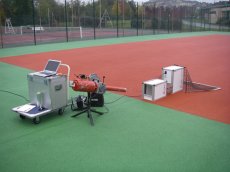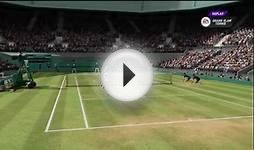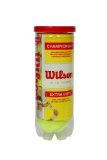Grand Slam Tennis court surfaces
 Tennis Court surfaces and their speeds is a topic that often confuses people, there’s a ton of conflicting information and a lot of speculation about whether a surface is playing fast or slow. But is there a way to end all that and simple say for example Indian Wells is played on X and it plays at X speed. In this post I’m going to try and find out.
Tennis Court surfaces and their speeds is a topic that often confuses people, there’s a ton of conflicting information and a lot of speculation about whether a surface is playing fast or slow. But is there a way to end all that and simple say for example Indian Wells is played on X and it plays at X speed. In this post I’m going to try and find out.
Why am I writing this? Well for 2 reasons really, my last post asked whether or not Djokovic was unbeatable on Plexicushion, which is the surface used at the Australian Open. A couple of people mentioned that he’s beatable on it because that’s the surface used at the World Tour Finals, it’s not actually so I thought it’d be good to clear up which surface is used at each tournament. And secondly because the slowing of the courts is something that seems to be happening year on year so I want to know if court pace rating is a relevant measurement.
I’m going to look at all the surfaces in use at Grand Slam and Masters 1000 and 500 level, their official speed ratings designated by the ITF and the characteristics that each court has so there’s no confusion about which surfaces are which and how quickly or slowly they should play according to the ITF. Remember that little bit.
What will I cover?
- The types of court surfaces
- How the ITF measures the speed of them
- The speed ratings of all Masters 1000, 500 and Grand Slam tennis courts
- Why I think the system is flawed (as I found out through doing the research)
- How I’d solve the court speed problem
What types of Court Surfaces are used across the world?
Tennis is probably one of the few games in the world that’s played on a variety of surfaces be it grass, clay or hard courts each of those surfaces has smaller subsets made up from different materials like concrete, artificial grass and acrylic. All court surfaces go through a rigorous testing procedure before they can be approved as an official surface by the ITF, the tests takes into consideration friction, energy restitution, topgraphy and consistency.
The types of Tennis Court officially in use across the world are:
- Acrylic
- Artificial Clay
- Artificial Grass
- Asphalt
- Carpet
- Clay
- Concrete
- Grass
- Other e.g. tiles, wood, canvas and modular systems.
You might also like





|
Wilson US Open Extra Duty Tennis Ball (Single Can) Model: WRT1071 Sports (Wilson Sporting Goods)
|

|
Wilson Sporting Goods Championship Extra Duty Tennis Balls (1-Can) Model: WRT1001 Sports (Wilson)
|


